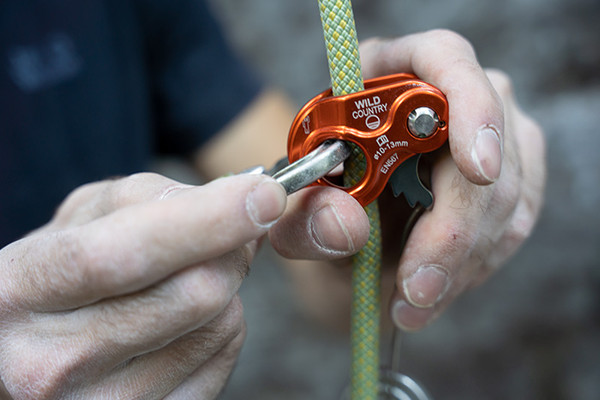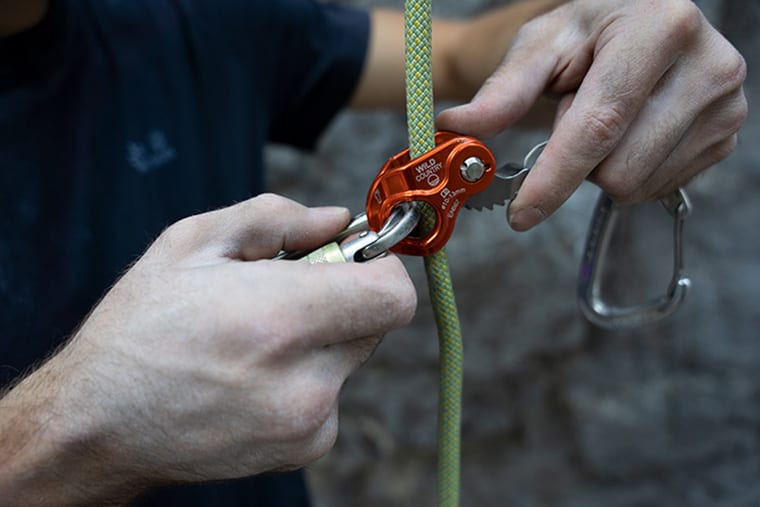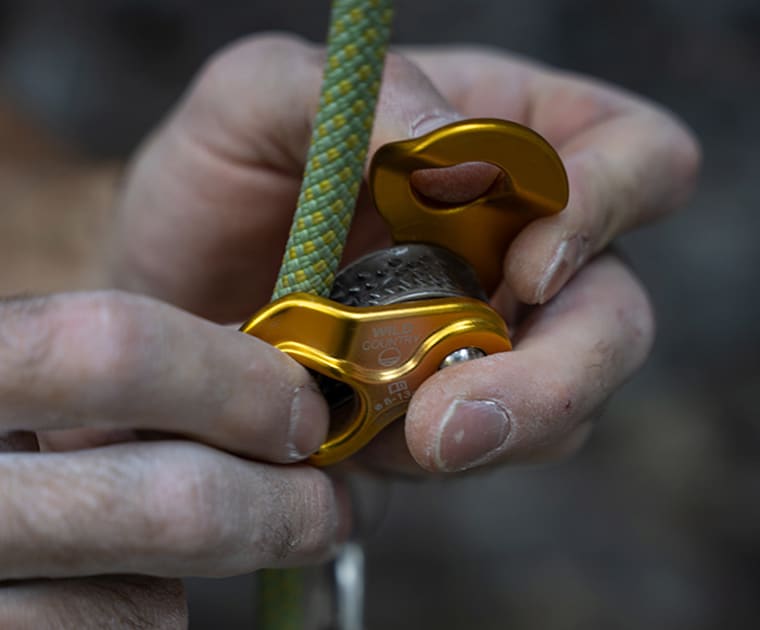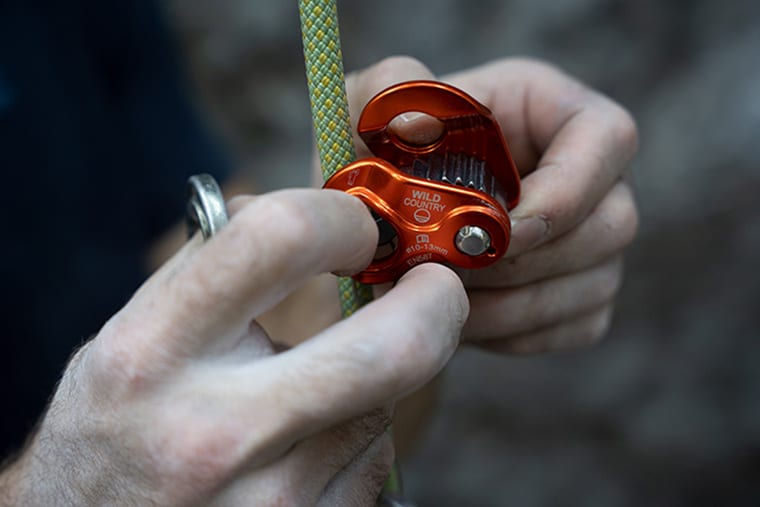Gear Review: Ropeman 1 vs Ropeman 2
Posted by Dan Goodman on 28th Aug 2020
Today, we set out to tackle a question we run into all the time.
What is the actual difference between the Wild Country Ropeman 1 and the Ropeman 2?
The name’s the same, they look nearly identical, and they’re made by the same company. So, what makes them different?
The answer is quite a lot.
If you want the short story, here’s the skinny.
If you’re a climber or mountaineer, you’ll likely favor the Ropeman 2 for its compatibility with thinner ropes and stainless steel cam, which enhances long term durability.
On the other hand, the Ropeman 1 has found its niche with arborists and hunters looking to access tree stands, who generally find themselves using thicker ropes and wanting those ropes to last as long as possible.
But there’s a whole lot more to the story than that.
Weight
Starting with a small but essential difference between the two Ropeman ascenders is the weight.
The Ropeman 1 weighs just 2.2 ounces, while the Ropeman 2 weighs in at 3.3 ounces.
What difference does just over an ounce make?
That depends entirely on what you’re doing, but as we’ll discuss later, the Ropeman 2, which might be heavier, is compatible with thinner ropes, which gives you the option to run a lighter setup overall. In other words,while the Ropeman 1 is only two-thirds of the weight, that alone shouldn’t be the deciding factor for most users.
Cam Material
You might find yourself asking, “what makes one weigh more than the other?” The answer to that lies in the materials used for the cam.
An aluminum alloy cam makes up the heart of the Ropeman 1, giving it a lighter weight. This construction, while keeping weight to a minimum, also leaves the Ropeman 1 more susceptible to deterioration and wear over time. Although it might seem like it would take decades of abuse to wear out an aluminum cam, it’s easier than you might think.
The Ropeman 2 features a stainless steel cam instead of one made from aluminum. This adds weight, but also increases durability, making it better suited for use as a daily driver or hauling workhorse.
Cam Teeth
Outside of the material differences, these cams also sport different teeth for gripping ropes while ascending.
On the Ropeman 1, you’ll find ridges that run horizontally to provide the traction necessary for climbing or hauling rope lines. These are non-aggressive and will cause less damage to your rope than other popular options.
Staring down the barrel of the second generation, you’ll find a completely different story. With 14 rows of sharp, pointed teeth running the length of the cam, the Ropeman 2 offers a reliable grip that you’ll appreciate when your feet are well off the ground.
This extra traction comes with a price though, in that these teeth bear down into your rope, which can cause significant rope damage over time.
Compatible Rope Sizes
The differences in the cam designs matters not only for the durability and lifespan of your rope, but also for the rope size compatibility.
Both rope ascension tools are compatible with lines up to 13mm in diameter. Still, the more aggressive teeth of the
Ropeman 2 make it compatible with ropes down to 8mm, while the Ropeman 1 is not compatible with ropes less than 10mm in diameter
This means that the Ropeman 2 is substantially more versatile for mountaineering, big wall climbing, and other climbing activities, where the ropes involved are generally smaller in diameter.
In the Field
The manufacturer’s specs are great for the decision-making process, but for something like a climbing ascender, it’s also essential to know how it works when you’re trying to use it. We took both models out and gave them a run for their money.
If you aren’t familiar with how these tools work, Wild Country has a great video series on how to use them, plus specific ascension techniques for different scenarios.
While the Ropeman’s basic design doesn’t lend itself to the same kind of easy ascension that a handled climbing ascender provides, it does about as clean of a job of it as possible when considering its weight and size.
Most importantly, both models were easy to slide up and offered positive, slip-free purchase on the ropes when weighted. This included rope diameters falling both within and below their stated size compatibility. Although you’ll always be using two devices, essential for ascending and giving you a backup should one fail for any reason, it’s nice to know that Wild Country was conservative with their rope compatibility ratings.
In fact, the only difficulty we encountered was slipping a carabiner through the devices. The best trick we found was to disengage the cam, attach a locking carabiner, and then let the cam re-engage, making it a relatively minor inconvenience for a device that works seamlessly otherwise.
Conclusion
We held off offering an opinion on the “winner” for each category outlined above because, for this comparison, it’s all about what you’re looking to get out of your tool. Despite looking similar, the Ropeman 1 and the Ropeman 2 are really for different users.
Ropeman 1
The original model is great for anyone who is planning on using thicker ropes. Climbers seem to be trending towards using ropes thinner than 10mm in diameter these days, but line ranging anywhere from 10 to 13 mm are still very common with arborists and hunters, as well as certain in certain climbing applications, especially in the world of static lines.
So, if your rope falls within the compatible range, and you want to maximize the lifespan of your rope, the Ropeman 1 is a great choice.
Ropeman 2
The more recent design is for the modern climber who plans to put their climbing ascender, and rope, through the wringer. This climber won’t have any qualms about the sharper teeth biting into their cord as they’ll likely be replacing their lines for other reasons well before that becomes an issue.
This user also won’t mind the extra ounce that the Ropeman 2 adds to their kit, as they’ll be using thinner ropes that will drop several pounds off of their pack weight, something that is simply not an option with the original version.
In short, if you’re looking for a Ropeman ascender for technical climbing purposes or mountaineering, you’ll likely be a fan of the Ropeman 2. For other use cases, and with ropes of the right diameter, the Ropeman 1 will serve you well.
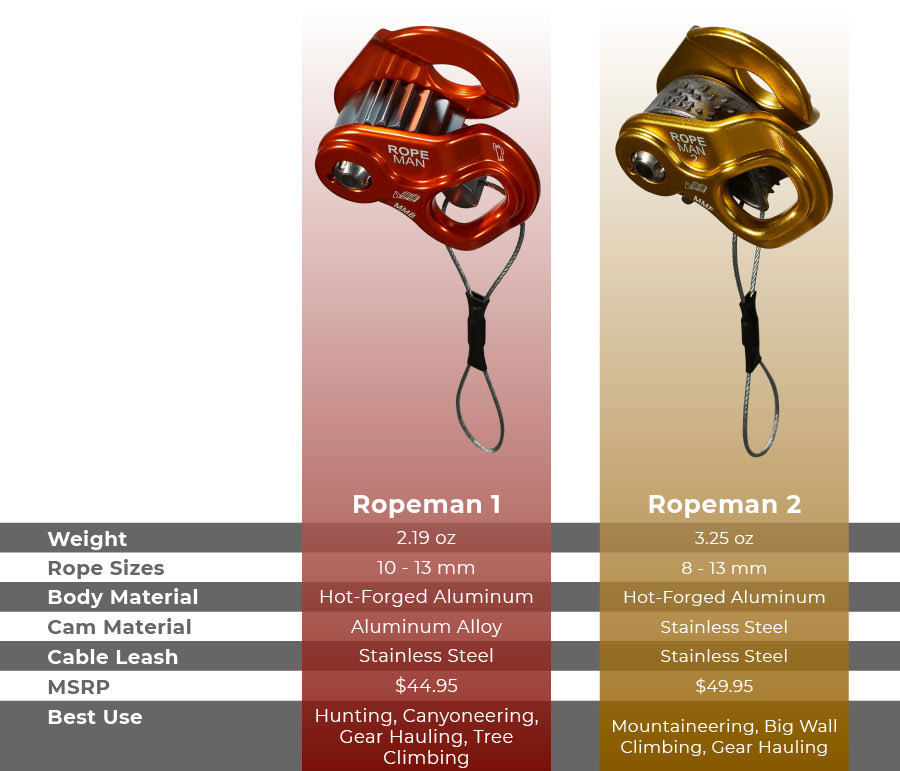
About Campman
Campman is an outdoor retail store located in Salt Lake City, Utah, that specializes in gear and equipment for camping, skiing, backpacking, climbing, and everything in between. We understand that the difference between a bad memory and the adventure of a lifetime can come down to the gear you take with you when you head outdoors, and we want our customers to have the best experiences possible. When it comes to getting outside, we get it, and we’ll get you the gear you need to get there.
About the Author
 Dan Goodman
Dan Goodman
Most of the year, Dan can be found chasing the best climbing conditions he can get his hands on, and in the dead of winter, he’ll settle for chasing powder on his snowboard. He’s constantly seeking out better gear, testing new climbing shoes, backpacks, sleeping bags, and more to make his life in the outdoors a bit more comfortable. When he’s not outside putting his gear to good use, he’s writing about the products that he knows best.
Share on:

